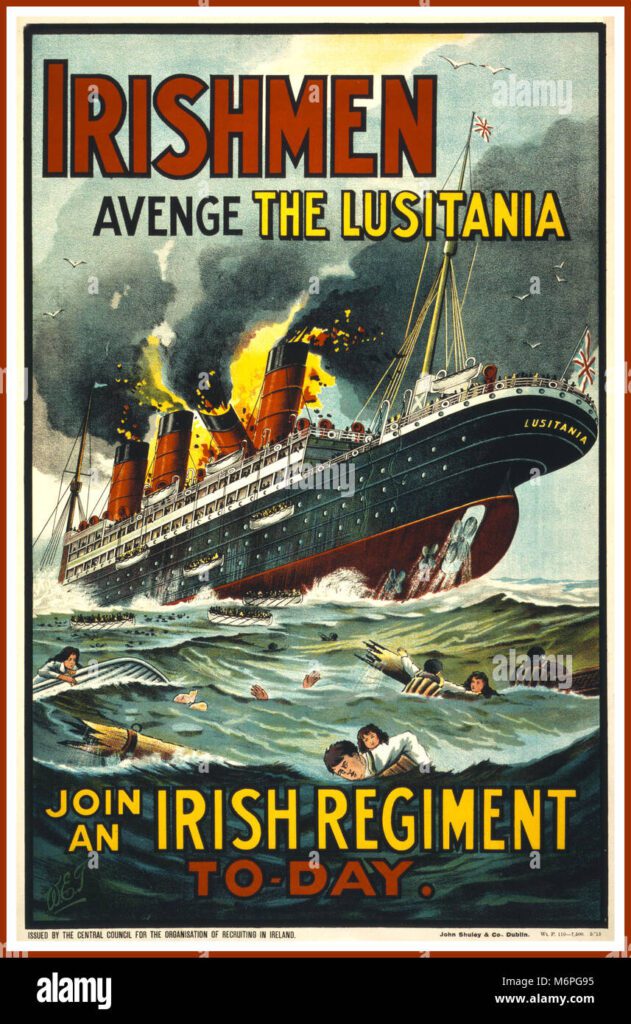The sinking of the RMS Lusitania on May 7, 1915, during World War I, was a tragic event that resulted in the deaths of nearly 1,200 passengers and crew members, including over 100 Americans. This infamous maritime tragedy was a turning point in the conflict, impacting public opinion and drawing the United States closer to entering the war on the side of the Allies. The luxury ocean liner, known for its elegance and opulence, was torpedoed by a German submarine, highlighting the ruthlessness of war at sea. The legacy of the Lusitania serves as a cautionary tale of the consequences of conflict and the importance of diplomacy to prevent such tragedies.
The Sinking of the Lusitania: An Infamous Maritime Tragedy of World War I
The sinking of the RMS Lusitania on May 7, 1915, during World War I, was a turning point in the conflict and a stark reminder of the devastation war can bring. The luxury ocean liner was torpedoed by a German submarine off the coast of Ireland, resulting in the deaths of nearly 1,200 passengers and crew members, including over 100 Americans. The tragic event had a profound impact on public opinion, both in the United States and around the world, ultimately drawing the country closer to entering the war on the side of the Allies.
The Lusitania: A Majesty of the Seas
The RMS Lusitania was one of the largest and most luxurious passenger liners of its time, built by the prestigious Cunard Line. Launched in 1906, the ship quickly became a symbol of elegance and opulence, carrying wealthy passengers across the Atlantic between Europe and the United States. With its sleek design, advanced technology, and lavish amenities, the Lusitania was considered a marvel of modern maritime engineering.
War at Sea: The German U-Boat Threat
By 1915, World War I had been raging for nearly a year, with Germany and the Allies locked in a brutal struggle for dominance. At sea, German U-boats, or submarines, were wreaking havoc on Allied shipping, sinking merchant vessels and military ships alike. The German government had declared a ruthless policy of unrestricted submarine warfare, targeting any vessel entering designated war zones around the British Isles.
The Attack on the Lusitania
On May 7, 1915, the Lusitania departed from New York City on its fateful voyage to Liverpool, England. Unbeknownst to the passengers and crew, the ship was entering dangerous waters patrolled by German U-boats. As the Lusitania neared the coast of Ireland, it was spotted by the German submarine U-20, commanded by Captain Walther Schwieger. Without warning, Schwieger fired a torpedo at the massive liner, striking its starboard side and causing a massive explosion.
The Aftermath of the Tragedy
The sinking of the Lusitania was a shocking and devastating event that reverberated around the world. The loss of over 1,100 lives, including women and children, sparked outrage and condemnation from all corners. The sinking also had political ramifications, particularly in the United States, where public sentiment quickly turned against Germany. President Woodrow Wilson, who had been striving to keep the country out of the war, faced mounting pressure to take action in response to the attack.
Legacy of the Lusitania
The sinking of the Lusitania remains one of the most infamous maritime tragedies in history, a stark reminder of the horrors of war and the fragility of human life. The event played a significant role in shaping public opinion and ultimately drawing the United States into World War I. The legacy of the Lusitania lives on as a cautionary tale of the consequences of conflict at sea and the need for diplomacy and cooperation to prevent such tragedies from happening again.
In conclusion, the sinking of the Lusitania stands as a tragic and poignant reminder of the human cost of war and the importance of remembering the sacrifices made by those who perished. May their memory never be forgotten.
